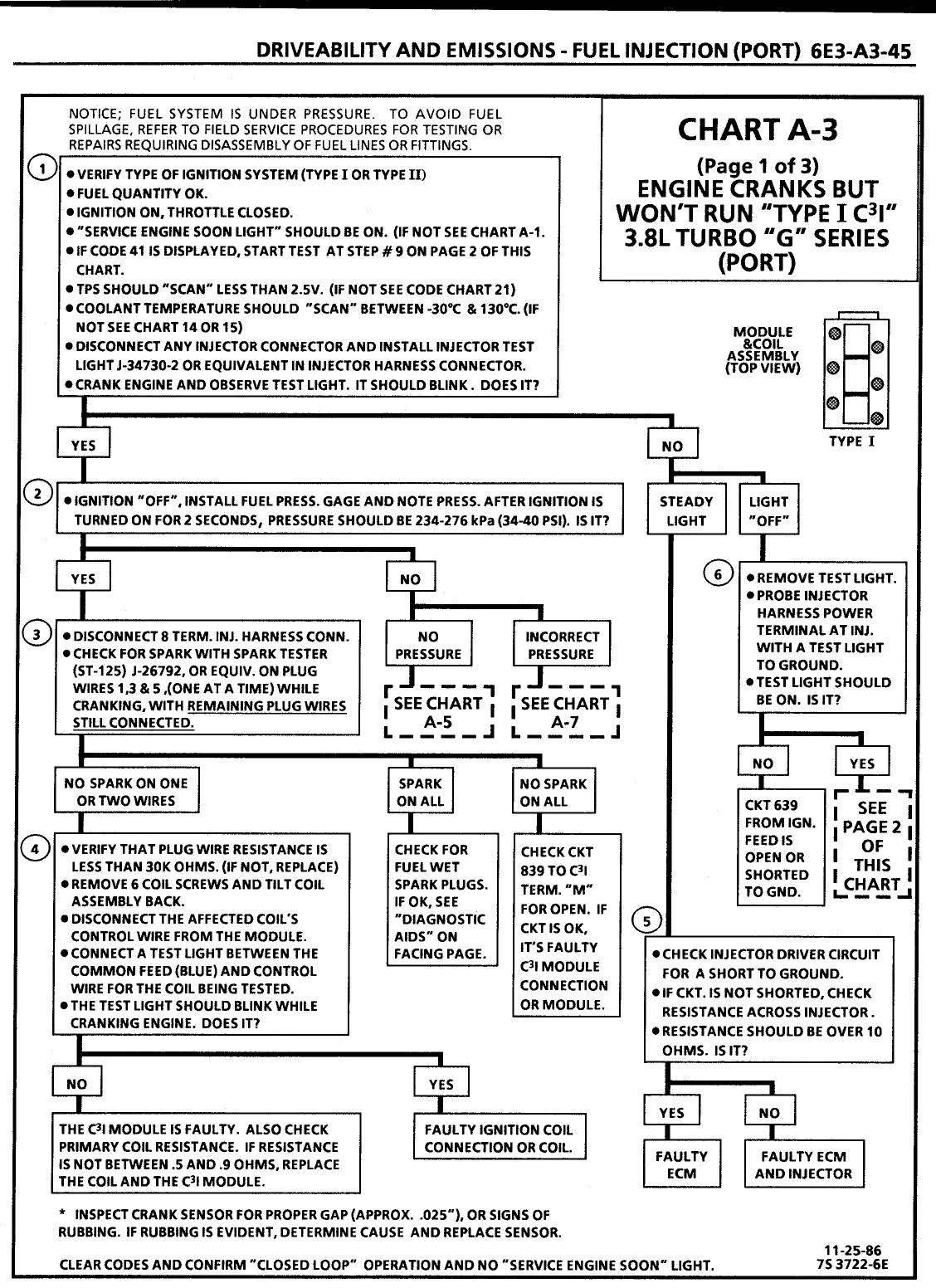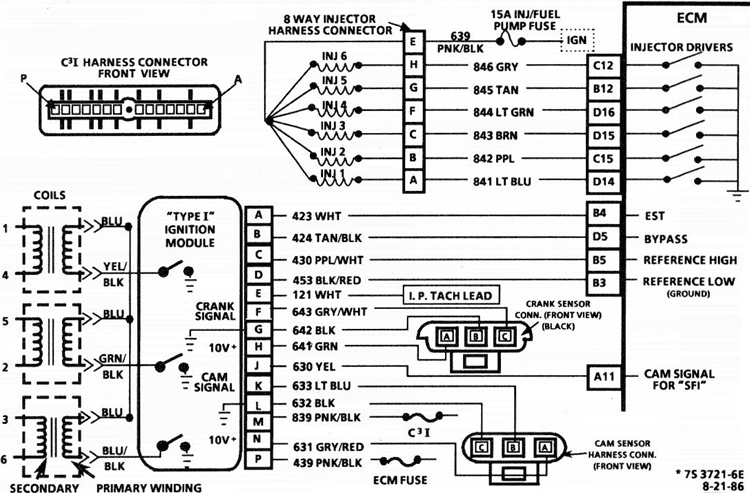CHART A-3
(Page 1 of 3)
ENGINE CRANKS BUT WON’T RUN “TYPE I C3I”
3.8LTURBO “G” SERIES (PORT)
Circuit Description:
The C3I uses a waste spark method of spark distribution. In this type of ignition system the ignition module triggers the #1/4 coil pair resulting in both #1 and #4 spark plugs firing at the same time. #1 cylinder is on the compression stroke at the same time #4 is on the exhaust stroke, resulting in a lower energy requirement to fire #4 spark plug. This leaves the remaining high voltage to fire #1 spark plug.
The Sequential Fuel Injection type of fuel delivery system utilizes 6 separate injector driver circuits to activate the 6 fuel injectors. While cranking, the ECM activates all 6 injectors simultaneously (all at one time). After a calibrated engine rpm is reached and a good Cam signal has been received by the ECM, the injection mode of operation is changed to Sequential (timed separately).
Test Description:
Step numbers refer to step numbers on diagnostic chart.
-
Identification of "TYPE I” or "TYPE II” ignition system is very important, because the “TYPE I” diagnostics will not work on "TYPE II” systems. Identification can be made by comparing the position of the coil towers with the drawing at the top of the chart. This step verifies “SES” light operation, TPS and Coolant Sensor signals are normal. A blinking injector test light verifies that the ECM is monitoring the C3I reference signal and attempting to activate the injectors.
-
Both the Cam and Crank Sensors have been verified as functioning properly as is evidenced by the blinking injector test light. A fuel pressure test, at this point, will separate the diagnostic path into either a fuel related fault, or ignition system malfunction.
-
The 8 terminal injector harness connector must be disconnected to avoid flooding of the engine and fouling of the spark plugs. By testing for spark on plug leads 1, 3, and 5, each ignition coil’s ability to produce at least 25,000 volts is verified.
-
By testing the problem coil’s control circuit with a test light, a determination can be made as to the problem coil being faulty or the module’s internal driver for that coil being the source of the complaint.
-
An injector, with a resistance value of less than 10 ohms (shorted), could cause repeat ECM failures.
-
Tests for battery voltage on CKT 639. If voltage was present, the light off’ test result was caused by no activation pulse reaching the injector connector from the ECM.

